|
BULB LOG 33 --- 15th August 2007
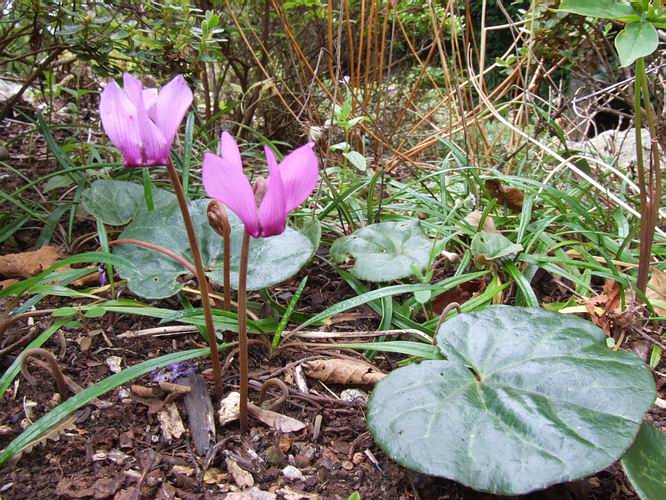
Cyclamen purpurascens
I am conscious that I have not been showing many flowers in recent logs, preferring instead to show the bulbs that I am working on daily as I repot -repot - repot ----- So for a change here are some of the first flowers of Cyclamen purpurascens, the first deliciously scented flower opened three weeks ago and many more will follow as this species continues to flower until November. The flowers always open at the same time as the plain green leaves of this form appear.
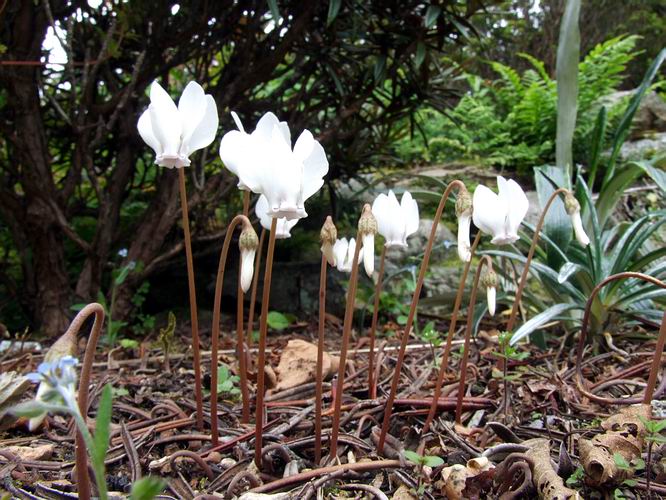
Cyclamen hederifolium album
In contrast the white flowers of this Cyclamen hederifolium album bloom some time before the leaves will appear - we have other forms of Cyclamen hederifolium whose flowers and leaves appear together.
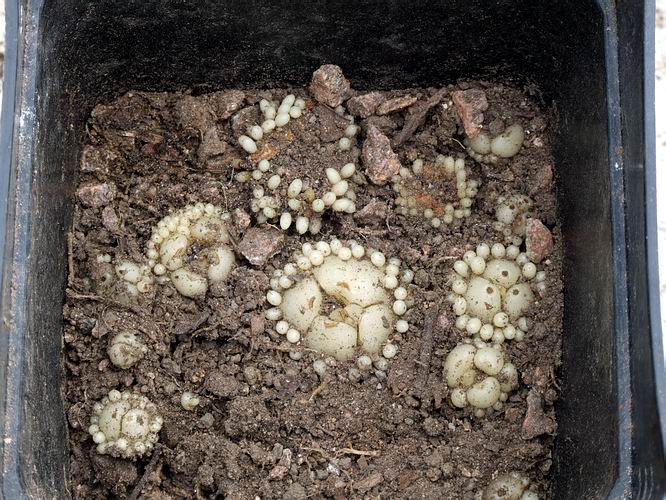
Fritillaria pudica
Now back to the bulbs - at the top of this pot of Fritillaria pudica you will notice that two bulbs have rotted while the others are perfectly healthy.
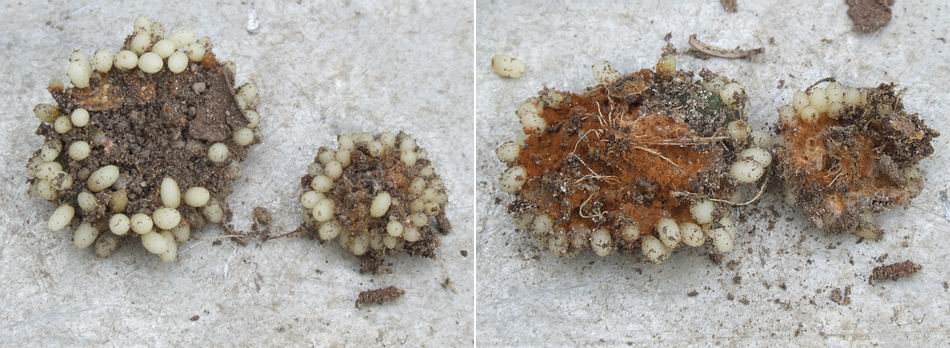
Rice on rotten bulbs
Looked at from above and below, the bulbs have completely rotted, leaving only a legacy of perfectly healthy rice grain bulbs. I have no idea what caused these bulbs to die but this amazing survival adaptation, of producing many offsets in the form of rice grains, ensures the survival of these bulbs both in the wild and cultivation. In the wild a population of bulbs could quickly be wiped out if an unusually dry period occurred when the bulb was in growth or alternatively if the bulb's dormancy coincided with unseasonable wet period. These environmental conditions could cause the entire population of mature bulbs to be killed off but their genes would live on as the masses of rice grains could repopulate the area.
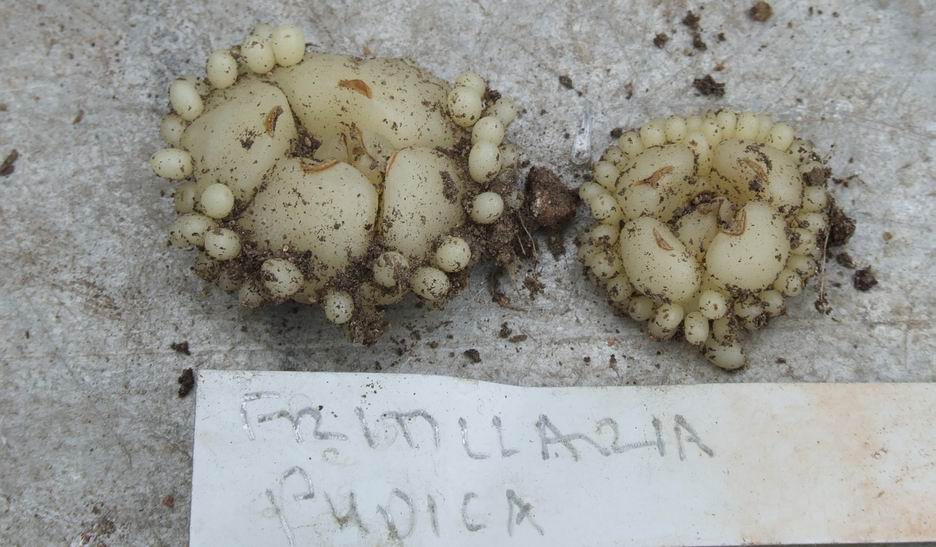
Fritillaria pudica bulbs
Here are some perfectly healthy Fritillaria pudica bulbs: these belong to what I call the 'old form'. These have been in cultivation and passed around for a very long time and it is a small flowered form with slender leaves. All the other forms of Fritillaria pudica we grow are those I have raised from wild collected seed and they are all bigger than the old form - the leaves are broader and the flowers are larger. I was curious about the so called 'giant form' which I got hold of. It is exactly the size of all the wild raised forms that I have so I think that instead of them being giant forms the 'old' form was a diminutive example collected many, many years ago and as a result of the masses of rice it produced it became very widely distributed.
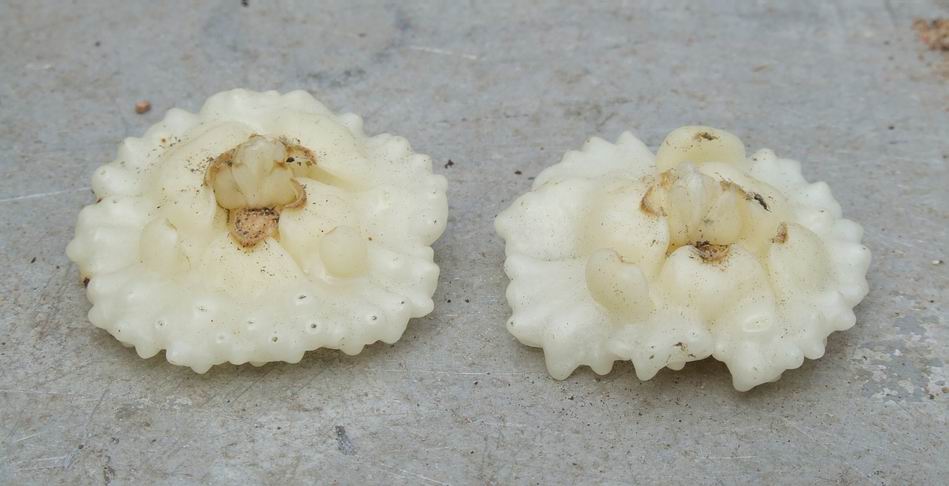
Fritillaria pudica col WA
These are the bulbs of the collected from of Fritillaria pudica which I can easily distinguish from those of the old form. I have removed the rice from these so you can see they are more disc-like, with a larger area for rice grains.
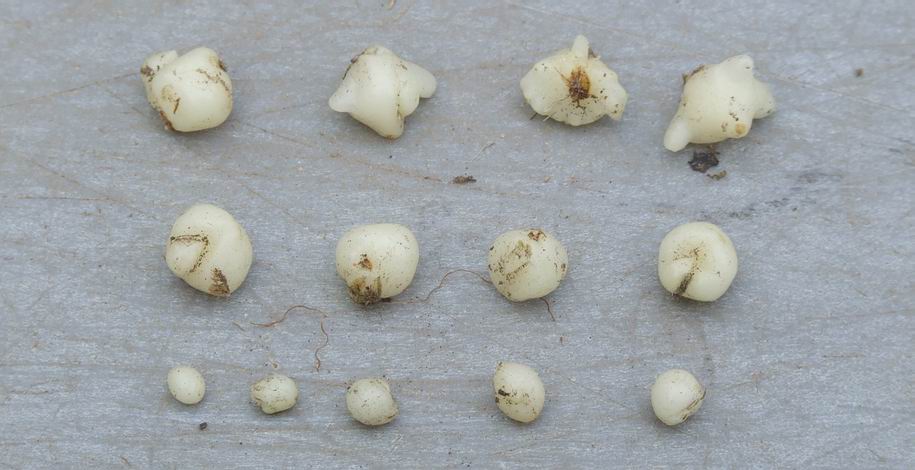
Fritillaria pudica rice
Here, starting from the bottom, is the progression from rice grains to something resembling a small mature bulb in year three at the top - it takes around four to five years to get flowering sized bulbs.
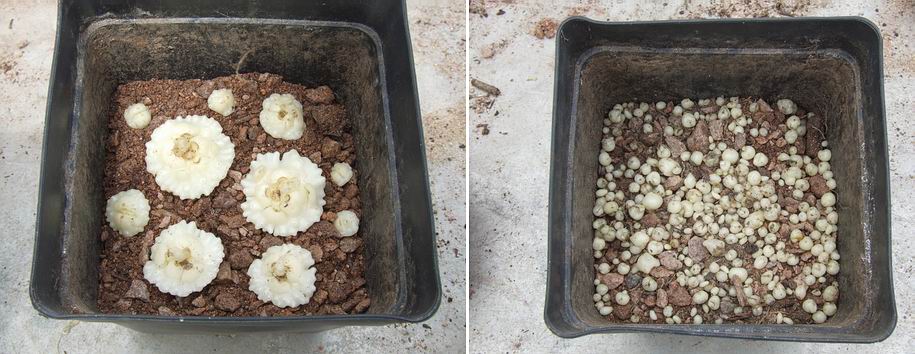
Fritillaria pudica repotted
Here are the mature bulbs potted separately from the rice grains. Notice that I do not plant this type of frit bulb quite so deep - I think that disc shaped bulbs prefer not to be too deeply planted. Growing the rice in a separate pot allows me to feed it a bit more heavily than would be good for mature bulbs and so get them to flowering sized bulbs quicker. I do not always grow the rice on separately - it depends on how much I have and if I have space for another pot! It will grow just as well in the same pot as the adult bulb as long as you rub it off the bulb.
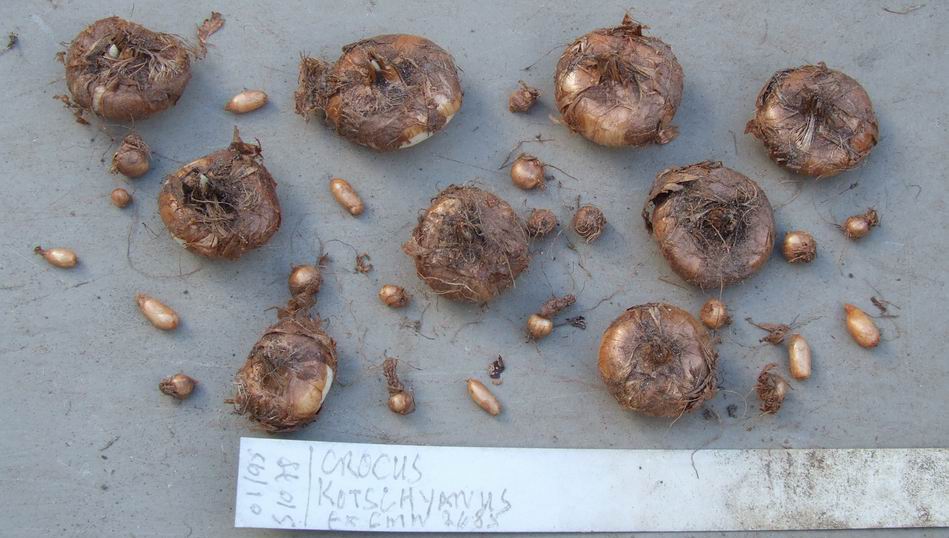
Crocus kotschyanus corms
I am also discovering that different crocus perform best planted at different depths and as a general rule I have discovered that flat those with flattish disc-like corms, such as Crocus kotschyanus, prefer to be planted at or just above half way down a pot. Crocus kotschyanus corms also produce a goodly number of rice grains which speeds up the rate at which they can be increased.
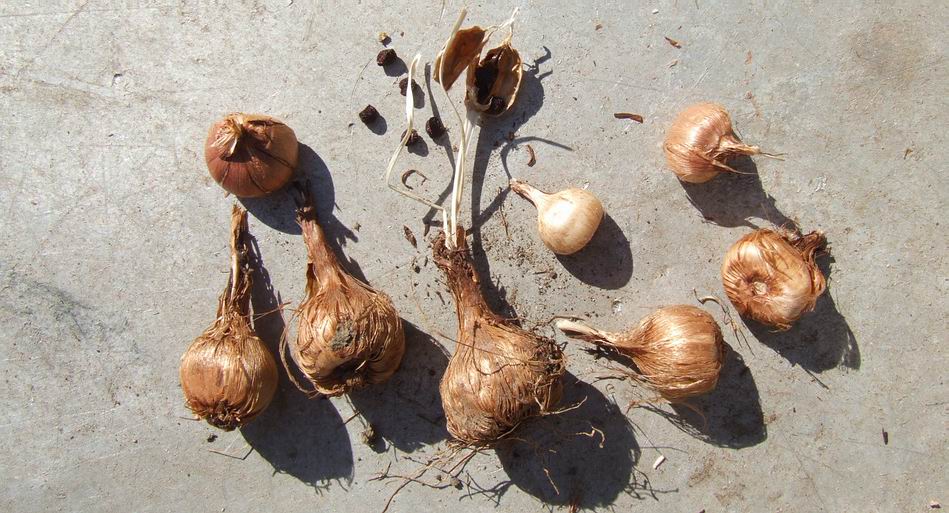
Crocus michelsonii corms
Crocus with more 'bulb' shaped corms, such as Crocus michelsonii above, seem to prefer to be planted below the half way mark in a pot. I did not think I had any seed set on my Crocus michelsonii this year until I was re-potting it yesterday and discovered a seed pod with some good seeds in still below the ground -a welcome added bonus.
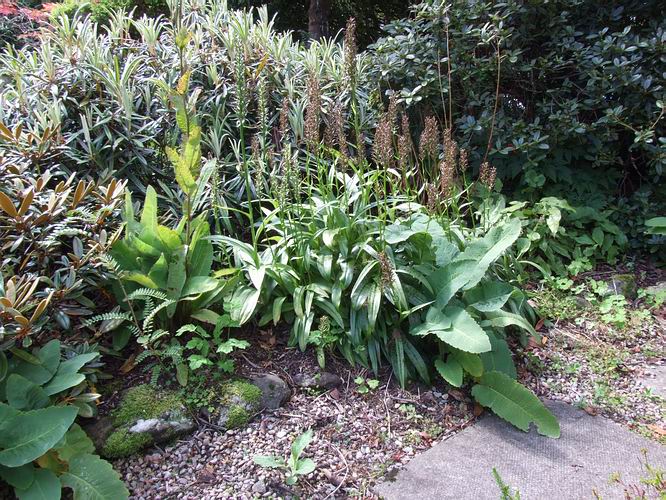
Dactylorhiza
It is now time for me to lift and split some of our Dactylorhiza clumps. If they are left too long they start to go backwards, producing fewer flowering stems as they have to compete for a diminishing supply of nutrients.
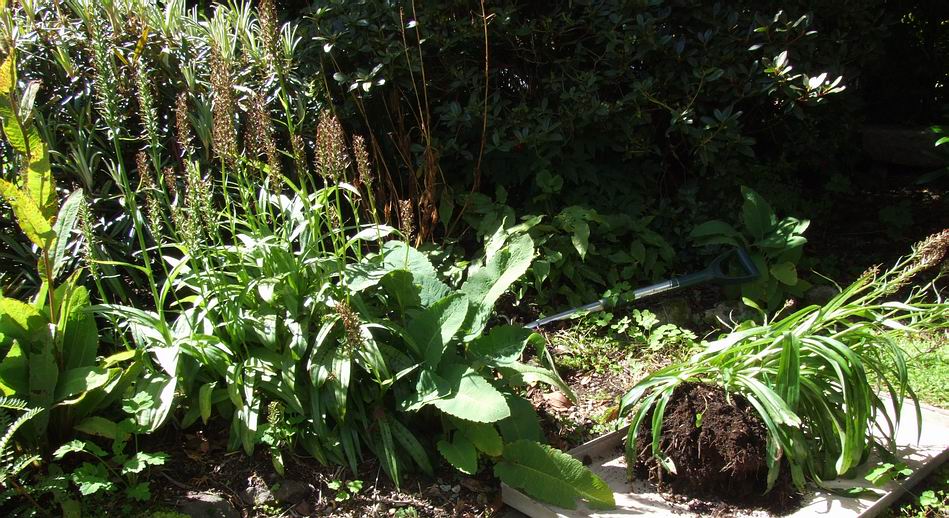
Dactylorhiza lift clump
I carefully lift a clump with a garden fork taking care to get the fork well below the depth of the roots before I gently lever them from the ground.
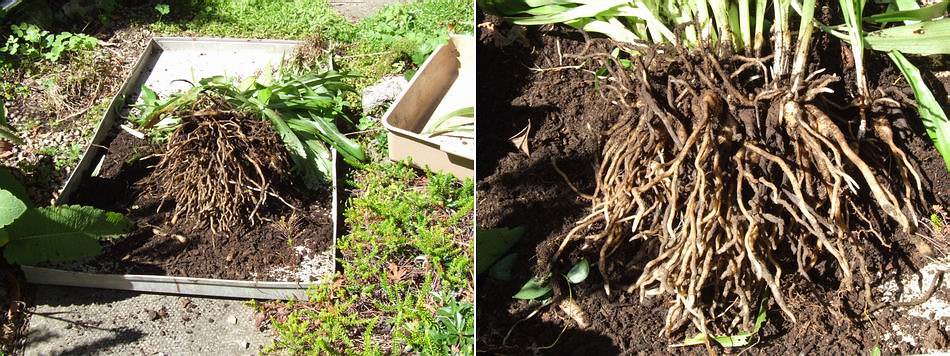
Shake to loosen
I then start to shake the clump to both remove the soil and to loosen the tangle of roots.
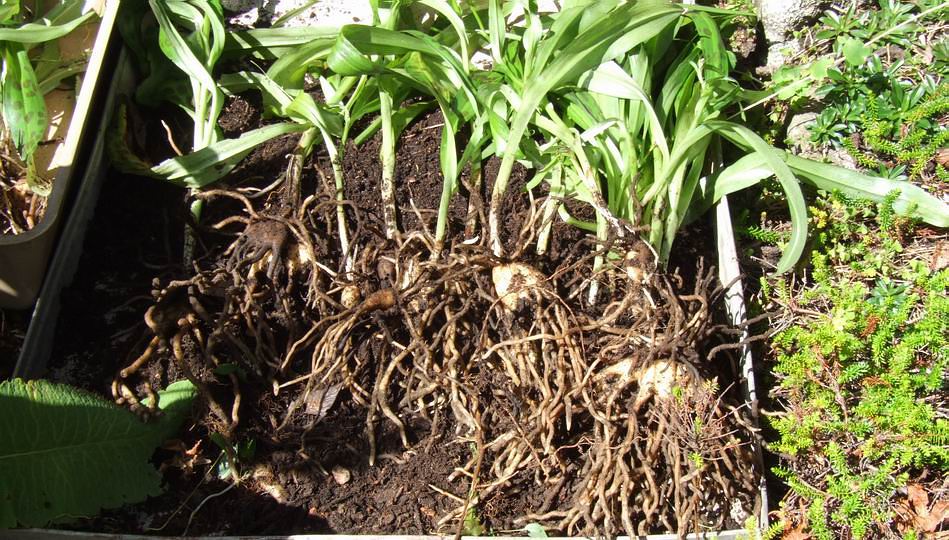
Dactylorhiza split apart
It is then possible to prise the individual bulbs apart with very little damage except for the odd root tip that gets broken. As I am handling them I am always pleased to detect the smell of horse which emits from healthy Dactylorhizas; I believe this is the smell of the mycorhizal fungi that is present.
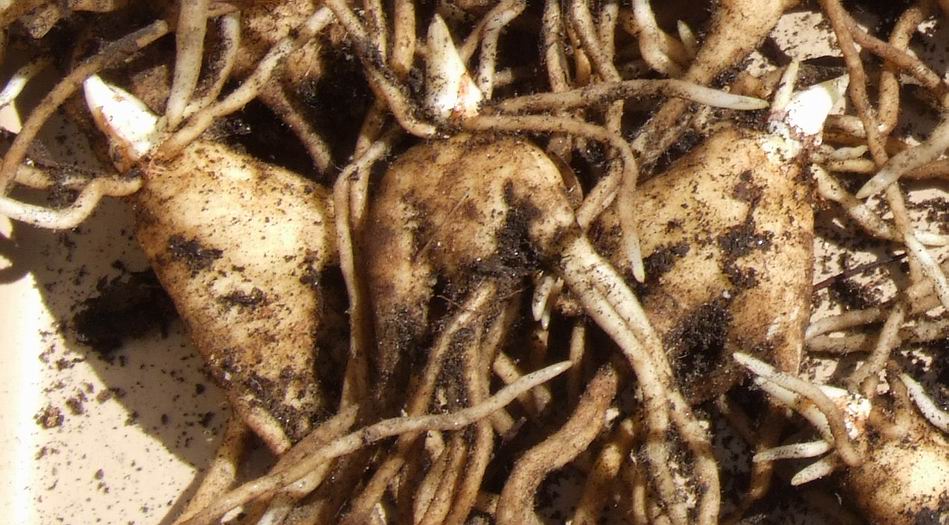
Tuber close up
If you look closely you should also see that healthy tubers should have a velvety surface, this is the mycorhizal fungi, I believe.

New tuber
Once separated out to individual stems I can now split off the new tuber.
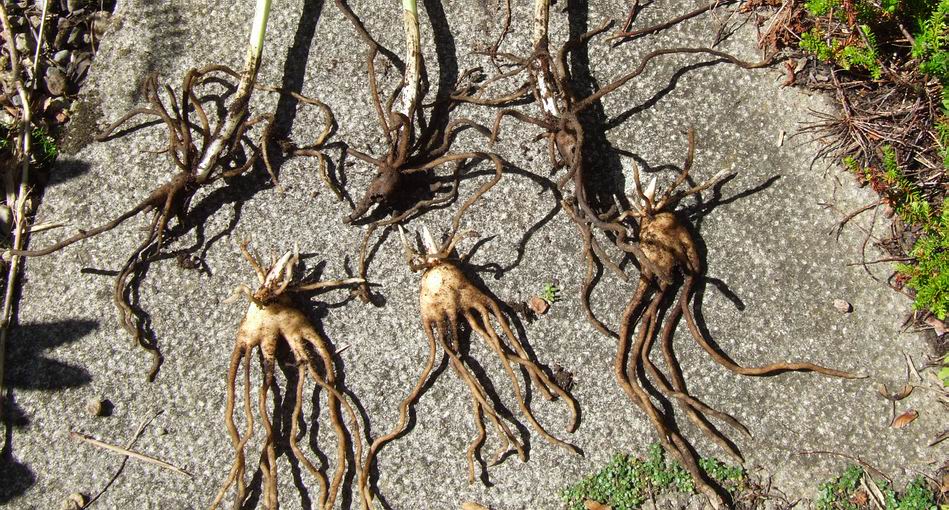
Remove New tuber
Do this carefully so you do not damage either the new tuber or the old blackened one, which should remain attached to the stem. I now plant the new tubers which will flower next year. I also plant up the green stem and old tuber; either into the garden if I have a space, or into pots where I keep them watered until they have died back naturally by which time they should all have produce at least one more new tuber.
^ back to the top ^
|

